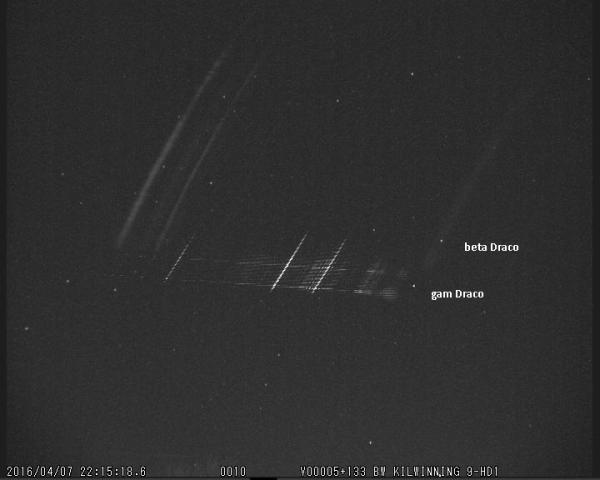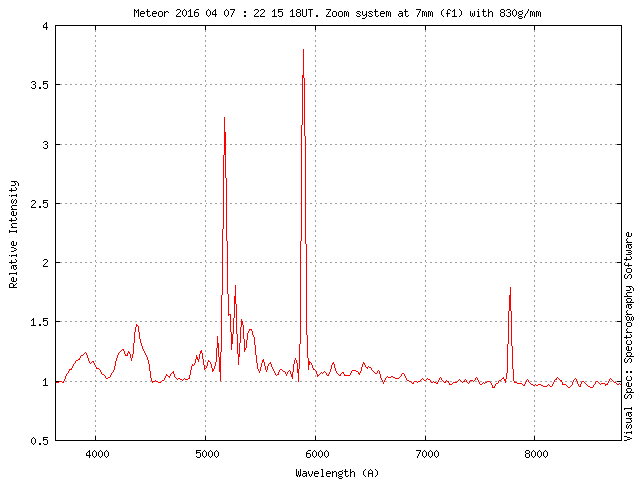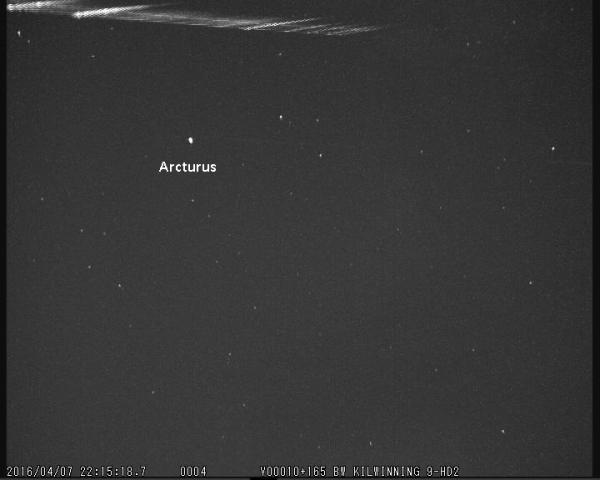› Forums › Meteors › More meteor spectroscopy › Hi,
Hi,
To try and increase the number of spectra captured I’ve been doing some tests with a zoom lens (3.5mm – 8mm f1) set at around 7mm. The lenses of this type I have are designed for 1/3 inch chips. When operated towards the longer focal length setting, offer full coverage of the Watec 1/2 inch chips. By viewing the screen whilst adjusting the focal length and focus I checked when the image looked just about fully illuminated.
The weather has been lousy of late but I did catch one good spectrum to at least check the system and make some comparisons. This was using a 830g/mm fused silica uv grating. The other longer lines are the spectrum of the compact fluorescent tube light in my kitchen 😉

This is the spectrum image with a few stars id’d for magnitude comparisons with a 12mm image.
Looks not too bad. The dispersion is ~1.45nm/pix. Here’e the spectrum…
…and the a synthetic colourised version…
Examining the graph, it can be seen that the blue focus is quite poor, that might be tweakable but I’ll need to experiment. However there are a couple of distinct (if broadened) features in the blue. Probably ionised calcium and a sequence of strong Fe lines.
By coincidence I caught the very same meteor with a 12mm f0.8 system. It is strongly foreshortened and there are definite optical disortions right at the edge of the fov but I’ve marked Arcturus for another magnitude reference. My 12mm systems give about 1.2nm/pix dispersion by comparison.
Roughly speaking the wider fov “see’s” about three times the area of sky but still has sufficient aperture to allow a good limiting magnitude for astrometry. I’m quite pleased with this. However the 7mm system is definitley missing the longer IR lines. The cameras are very sensitive to these wavelengths so there might be some vignetting going on. Need some more results to verify this.
I wasn’t sure how a low cost zoom lens would stack up but on the whole I think it’s pretty good. Time will tell…
cheers,
Bill.
